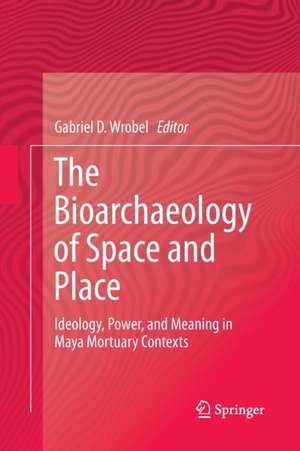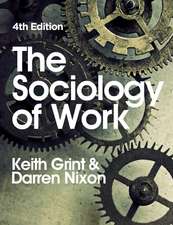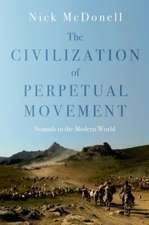The Bioarchaeology of Space and Place: Ideology, Power, and Meaning in Maya Mortuary Contexts
Editat de Gabriel D. Wrobelen Limba Engleză Paperback – 3 sep 2016
| Toate formatele și edițiile | Preț | Express |
|---|---|---|
| Paperback (1) | 640.88 lei 6-8 săpt. | |
| Springer – 3 sep 2016 | 640.88 lei 6-8 săpt. | |
| Hardback (1) | 646.62 lei 6-8 săpt. | |
| Springer – 16 apr 2014 | 646.62 lei 6-8 săpt. |
Preț: 640.88 lei
Preț vechi: 753.97 lei
-15% Nou
Puncte Express: 961
Preț estimativ în valută:
122.65€ • 126.70$ • 102.07£
122.65€ • 126.70$ • 102.07£
Carte tipărită la comandă
Livrare economică 26 martie-09 aprilie
Preluare comenzi: 021 569.72.76
Specificații
ISBN-13: 9781493944507
ISBN-10: 1493944509
Pagini: 303
Ilustrații: XI, 292 p. 62 illus., 28 illus. in color.
Dimensiuni: 155 x 235 x 16 mm
Greutate: 0.43 kg
Ediția:Softcover reprint of the original 1st ed. 2014
Editura: Springer
Colecția Springer
Locul publicării:New York, NY, United States
ISBN-10: 1493944509
Pagini: 303
Ilustrații: XI, 292 p. 62 illus., 28 illus. in color.
Dimensiuni: 155 x 235 x 16 mm
Greutate: 0.43 kg
Ediția:Softcover reprint of the original 1st ed. 2014
Editura: Springer
Colecția Springer
Locul publicării:New York, NY, United States
Cuprins
Chapter 1: Introduction.- Chapter 2: Sedimenting Social Identity: The Practice of Pre-Columbian Maya Body Partibility.- Chapter 3: Cueva del Lazo: Child Sacrifice or Special Funerary Treatment? Discussion of a Late Classic Context from the Zoque region of Western Chiapas (Mexico).- Chapter 4: A Case Study of Reverential Cave Use from Je’reftheel, Central Belize.- Chapter 5: Isotopic Insights into Mortuary Treatment and Origin at Xunantunich, Belize.- Chapter 6: Odontometric Investigation of the Origin of Freestanding Shrine Ossuaries at Mayapan.- Chapter 7: Human Dedicatory Burials from Altun Ha, Belize: Exploring Residential History Through Enamel Microwear and Tissue Isotopic Compositions.- Chapter 8: Danse Macabre: Death, Community and Kingdom at El Kinel, Guatemala.- Chapter 9: Mortuary Pathways and Ritual Meanings Related to Maya Human Bone Deposits in Subterranean Contexts.- Chapter 10: Mortuary Sealing Among the Maya.
Recenzii
“Primarily a study of context and scale, The Bioarchaeology of Space and Place offers scholars of Mesoamerica, bioarchaeology, and mortuary archaeology a suite of illustrative case studies and caveats regarding the analysis of small, biased burial samples. … Wrobel's volume provides a timely reminder regarding the importance of context and multiple lines of evidence to inform on the principles that structure the interment and reveal the identities of the inhumed decedents.” (Danielle S. Kurin, Journal of Anthropological Research, Vol. 71, 2015)
Notă biografică
Gabriel Wrobel is an Associate Professor of Anthropology at Michigan State University and the director of the Central Belize Archaeology Survey (CBAS) project. The primary focus of his research is mortuary contexts in caves and rockshelters in the Caves Branch River and Roaring Creek valleys, in which he seeks to reconstruct funerary pathways and explore aspects of social identity among those placed there. These data inform broader archaeological questions about the sudden and dramatic appearance of sociopolitical complexity in the area during the Middle Classic period, as well as its depopulation in the Terminal Classic period. While most of his research has concentrated on ancient Maya contexts in Belize, he has also worked in the American Southeast, in Kyrgyzstan and in Egypt at the site of Hierakonpolis.
Textul de pe ultima copertă
The Bioarchaeology of Space and Place investigates variations in social identity among the ancient Maya by focusing on individuals and small groups identified archaeologically by their inclusion in specific, discrete mortuary contexts or by unusual mortuary treatments. Utilizing archaeological, biological, and taphonomic data from these contexts, the studies employ a variety of methodological approaches to reconstruct aspects of individuals’ life-course and mortuary pathways. Following this, specific mortuary behaviors are discussed in relation to their local or regional cultural setting using relevant archaeological, ethnohistoric, and/or ethnographic data in an effort to interpret their meaning within the broader social, political and economic contexts in which they were carried out. This volume covers a number of topics that are currently being debated in Maya archaeology, including identification and discussion of the role and extent of human sacrifice in Maya culture, the use of ancestors for maintaining political power, the mortuary use of caves by both elites and non-elites, ethnic distinctions within urban areas, and the extent of movement of people between communities. Importantly, the papers in this volume attempt to test and move beyond static, dichotic categories that are often employed in mortuary studies in an effort to better understand the complex ways in which the Maya conceptualized and manipulated social identity. This type of nuanced case-study approach that incorporates historical, archaeological, and theoretical contextualization is becoming increasingly important in the field of bioarchaeology, providing valuable sources of data where small, diverse samples impede populational approaches.
Caracteristici
Uses well-conceived frameworks for integrating data from various fields (skeletal, archaeological, ethnohistoric, cultural etc) Focuses on individuals and small groups rather than aggregate data in Mayan society Each chapter contains a literature review Includes supplementary material: sn.pub/extras














